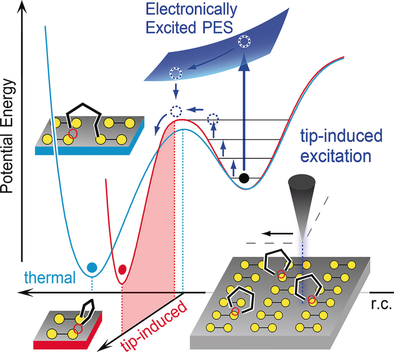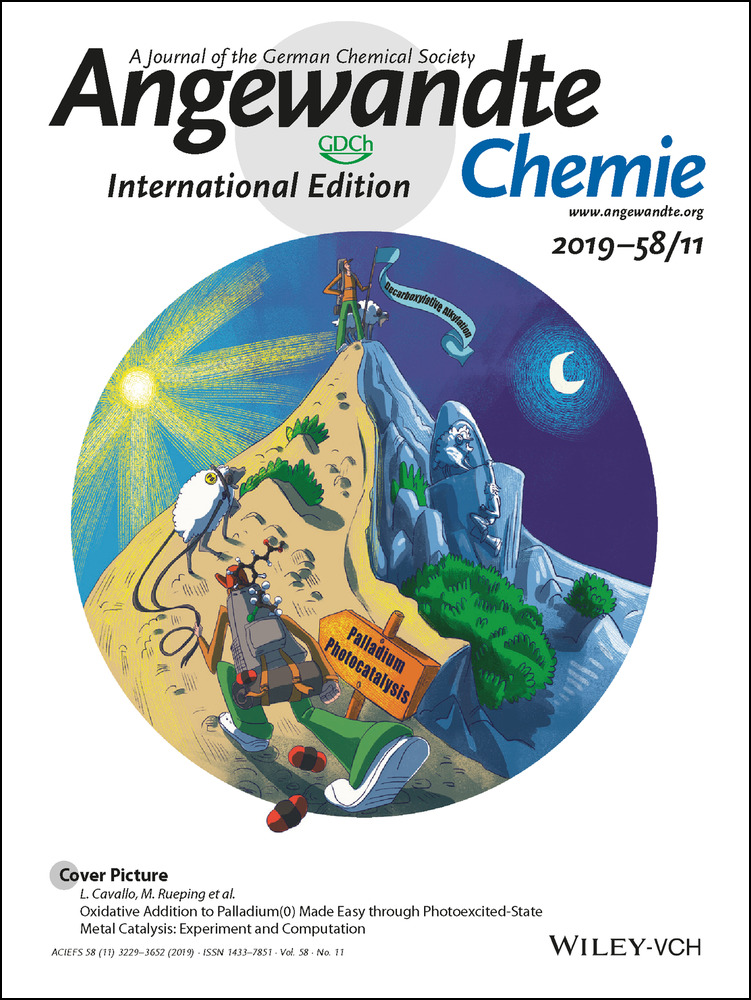Controlling an SN2 Reaction by Electronic and Vibrational Excitation: Tip-Induced Ether Cleavage on Si(001)
Graphical Abstract
Everything under control: New final products are observed when ether cleavage on Si(001)—the surface analogue of an SN2 reaction—is induced by the electrons of an STM tip. The nature of these final products can be controlled by the excitation mechanism—electronic or vibrational—which in turn can be selectively addressed by the tunneling bias. PES=potential energy surface.
Abstract
Controlling chemical reactions beyond thermally activated reaction schemes can open alternative reaction channels, and thus lead to new final products. Herein, we show for tetrahydrofuran (THF) cleavage on Si(001), the surface analogue of an SN2 reaction, that excitation by electrons from the tip of a scanning tunneling microscope (STM) not only opens new reaction channels, but that different final products can be selectively addressed by the type of excitation: Above a threshold voltage of 2.5 V, direct excitation by electron transfer into the antibonding C−O orbital of the THF molecules induces ether cleavage of the datively bonded intermediate of THF on Si(001). Below the threshold, ether cleavage is induced by multiple excitation of vibrational modes. In both modes of excitation, additional final configurations were observed when compared to the thermally activated reaction. The branching ratios of the final configurations are different for the two different excitation mechanisms, which in turn can be controlled by the applied sample bias.





